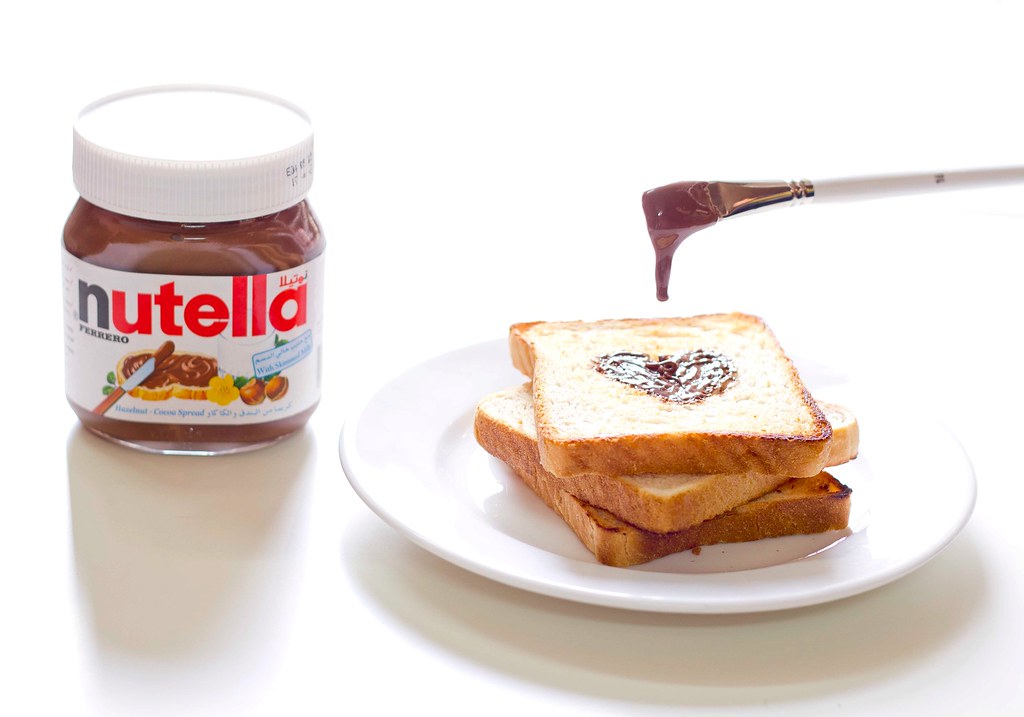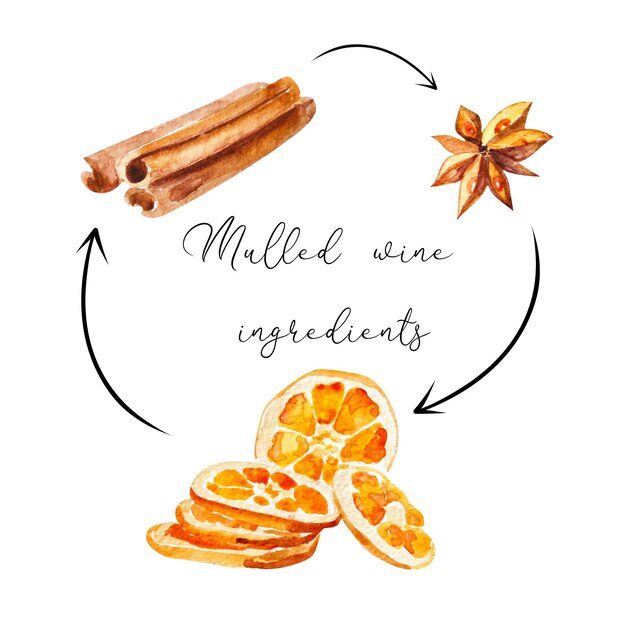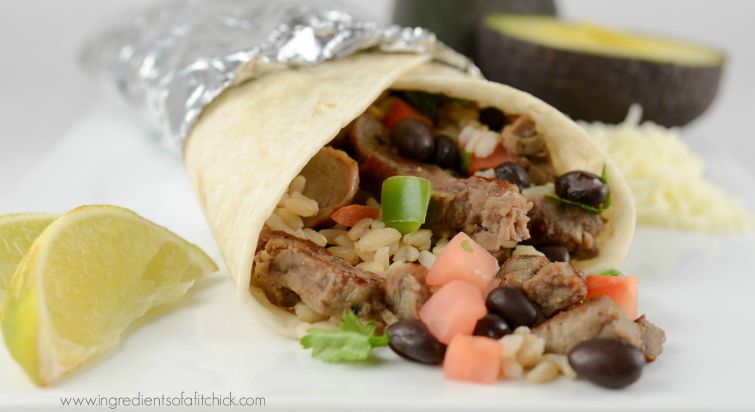What is the best oil to for achieving crispy and juicy fried chicken?
Fried chicken is a beloved dish that many people enjoy making and eating. However, one of the key factors in achieving a crispy and delicious fried chicken is choosing the right oil to fry it in. With so many options available on the market, it can be overwhelming to determine which oil is best for frying chicken.
When selecting an oil for frying chicken, it is important to consider its smoke point. The smoke point is the temperature at which the oil begins to break down and smoke. Oils with a high smoke point are ideal for frying, as they can withstand the high temperatures needed to achieve a crispy outside while maintaining a juicy interior.
Some oils that have a high smoke point and are commonly used for frying chicken include:
- Peanut oil: With its high smoke point and neutral flavor, peanut oil is a popular choice for frying chicken. It can withstand temperatures up to 450°F (232°C) without smoking, resulting in a crispy and golden crust.
- Canola oil: Another versatile oil with a high smoke point, canola oil is a good option for frying chicken. Its mild flavor allows the chicken to be the star of the dish, while its high smoke point ensures a crispy texture.
- Sunflower oil: Sunflower oil is known for its light flavor and high smoke point, making it suitable for frying chicken. It has a neutral taste that won’t overpower the chicken’s natural flavors.
It is also essential to consider the health aspect when choosing an oil for frying chicken. Oils that are high in saturated fats should be avoided, as they can contribute to heart disease and other health issues. Instead, opt for oils that are low in saturated fats, such as peanut oil, canola oil, or sunflower oil.
In conclusion, choosing the best oil to fry chicken depends on both the oil’s smoke point and its health benefits. Oils with a high smoke point, such as peanut oil, canola oil, and sunflower oil, are ideal for achieving a crispy and delicious fried chicken. Additionally, selecting oils that are low in saturated fats will help you make a healthier choice without compromising on taste. So, the next time you fry chicken, make sure to choose the right oil to enhance your culinary experience!
Choosing the Best Oil for Frying Chicken – A Comprehensive Guide
When it comes to frying chicken to perfection, choosing the right oil is crucial. Not only does the oil affect the taste and texture of the chicken, but it also determines how healthy the end result will be. With so many options available, it can be overwhelming to know which oil is best for frying chicken. In this comprehensive guide, we will explore the top oils recommended for frying chicken and discuss their benefits and drawbacks.
1. Canola Oil: Canola oil is a popular choice for frying chicken due to its neutral flavor and high smoke point. It is low in saturated fat and contains heart-healthy omega-3 fatty acids. Canola oil is also relatively affordable and widely available.
2. Peanut Oil: Peanut oil is another excellent option for frying chicken. It has a high smoke point and imparts a subtle nutty flavor to the chicken. Peanut oil is also low in saturated fat and suitable for those with peanut allergies, as the allergenic proteins are removed during the refining process.
3. Vegetable Oil: Vegetable oil is a versatile oil that can be used for frying chicken. It has a relatively high smoke point and a neutral flavor. However, it is important to note that “vegetable oil” often refers to a blend of different oils, so it is best to check the label for the specific types of oil used.
4. Corn Oil: Corn oil is another option for frying chicken. It has a high smoke point and a mild flavor that does not overpower the taste of the chicken. Corn oil is also rich in vitamin E and contains heart-healthy polyunsaturated fats.
5. Olive Oil: While olive oil is not traditionally recommended for deep frying due to its lower smoke point, it can still be used for shallow frying or pan-frying chicken. Extra virgin olive oil is a healthier option due to its minimal processing and higher antioxidant content.
6. Sunflower Oil: Sunflower oil is another suitable choice for frying chicken. It has a high smoke point and a mild flavor. Sunflower oil is also rich in vitamin E and low in saturated fat.
When choosing the best oil for frying chicken, it is important to consider factors such as smoke point, flavor, nutritional benefits, and allergenic potential. Experimenting with different oils can help you find the perfect one to achieve crispy, flavorful, and healthy fried chicken.
Consider Smoke Point and Stability
When choosing the best oil for frying chicken, it’s important to consider both the smoke point and stability of the oil. The smoke point is the temperature at which the oil starts to break down and release smoke. Oils with higher smoke points are better for frying because they can withstand higher temperatures without breaking down.
Smoke Point
Oils that have a high smoke point are ideal for frying chicken because they can handle the high heat required for deep frying. Some oils with high smoke points include:
- Avocado oil (520°F/270°C)
- Peanut oil (450°F/230°C)
- Sunflower oil (440°F/225°C)
- Safflower oil (450°F/230°C)
Stability
Stability is another important factor to consider when choosing an oil for frying. Oils that are more stable are less likely to break down and form harmful compounds when exposed to high heat. In general, oils that are high in monounsaturated fats or saturated fats tend to be more stable. Some stable oils for frying chicken include:
- Coconut oil
- Lard
- Ghee
- Canola oil
It’s important to note that vegetable oils, such as soybean oil, corn oil, and cottonseed oil, have high smoke points but are often highly refined and may contain trans fats. These should be avoided for healthier frying options.
Overall, when choosing the best oil to fry chicken, opt for oils with high smoke points and stability to ensure a delicious and healthier result.
Assess Flavor and Aroma
When choosing the best oil to fry chicken, it’s important to consider the flavor and aroma it will impart to the dish. Different oils have different taste profiles, and finding the right one that complements the flavor of the chicken is key to a delicious result.
Consider the smoke point:
The smoke point of an oil is the temperature at which it starts to produce smoke. Oils with low smoke points can impart a burnt or bitter flavor to the chicken, while oils with high smoke points can withstand high heat without breaking down and developing off-flavors. When frying chicken, it’s best to choose an oil with a high smoke point to ensure a clean and appealing taste.
Some oils with high smoke points that are ideal for frying chicken include:
Peanut oil:
With its neutral flavor and high smoke point, peanut oil is a popular choice for frying chicken. It has a mild nutty taste that doesn’t overpower the chicken’s natural flavors.
Canola oil:
Canola oil is another excellent option for frying chicken. It has a light, clean taste and a high smoke point, making it versatile and suitable for various cooking methods.
Consider the aroma:
The aroma of the oil can also impact the overall taste of the fried chicken. Some oils, such as extra virgin olive oil or sesame oil, have distinct flavors and scents that can enhance the dish. However, these oils may be better suited for specific recipes or flavor profiles, as they can overpower the chicken if used in large quantities.
When assessing the aroma:
Sniff the oil: Take a moment to smell the oil before using it. Does it have a pleasant scent that you think will complement the chicken?
Consider the dish: Think about the overall flavor profile of your chicken dish. If you’re making a dish with Asian-inspired flavors, oils like sesame or peanut may be a good choice to enhance the dish’s authenticity.
Experiment: If you’re feeling adventurous, you can experiment with different oils to find the perfect flavor combination. Just remember to keep track of your results so you can replicate your favorite combinations in the future.
By assessing both the flavor and aroma of the oil, you can ensure that your fried chicken is not only crispy and delicious, but also perfectly seasoned and full of flavor.
Evaluate Healthiness and Nutritional Value
When choosing an oil to fry chicken, it is important to consider the healthiness and nutritional value of the oil. Certain oils contain different types of fats and offer varying levels of vitamins, minerals, and antioxidants.
Here are some factors to evaluate the healthiness and nutritional value of different oils:
1. Fat Composition
Consider the types of fats present in the oil. Ideally, you want to choose an oil that is low in saturated fats and high in monounsaturated and polyunsaturated fats. Saturated fats can raise cholesterol levels and increase the risk of heart disease, while monounsaturated and polyunsaturated fats can have the opposite effect.
2. Smoke Point
Another important factor to consider is the smoke point of the oil. The smoke point is the temperature at which the oil starts to break down and produce smoke. Using an oil with a low smoke point can lead to the formation of harmful compounds. Choose an oil with a high smoke point to ensure that it can withstand the high heat of frying without compromising its nutritional value.
To help you evaluate the healthiness and nutritional value of different oils, here is a table comparing some common cooking oils:
| Oil | Saturated Fat | Monounsaturated Fat | Polyunsaturated Fat | Smoke Point |
|---|---|---|---|---|
| Olive oil | 14% | 73% | 11% | 410°F (210°C) |
| Canola oil | 7% | 63% | 28% | 400°F (204°C) |
| Peanut oil | 17% | 46% | 32% | 450°F (232°C) |
Based on this table, you can see that olive oil has a higher percentage of monounsaturated fat compared to saturated fat, making it a healthier choice. Canola oil also has a good balance of fats, while peanut oil has a higher smoke point, making it suitable for high-temperature frying.
Overall, when evaluating healthiness and nutritional value, consider the fat composition, smoke point, and other factors specific to your dietary needs and preferences.
Mind the Price and Availability
When choosing the best oil to fry chicken, it’s important to consider both the price and availability. Different types of cooking oils vary in price, and some may be more expensive than others. Keep in mind that the cost of the oil can add up if you’re planning to fry chicken regularly, so it’s essential to find a balance between quality and affordability.
Availability is another factor to consider. Some oils may be more readily available in certain regions or stores, while others might be harder to find. It’s important to choose an oil that you can easily purchase whenever you need it, without having to go out of your way or spend extra time searching for it.
When considering the price and availability of cooking oils, it’s also worth remembering that healthier options, such as oils with higher smoke points or those that are low in saturated fats, may be pricier or less readily available. However, investing in these healthier oils can have long-term benefits for your health and overall well-being.
To ensure you can find the best oil to fry chicken, take the time to compare prices and availability at different stores or online retailers. You might also consider buying in bulk or looking for deals to save money in the long run. Ultimately, finding a balance between price, availability, and quality is key to selecting the best oil for frying chicken.
Check for Specific Dietary Restrictions
When choosing the best oil to fry chicken, it is important to consider any specific dietary restrictions that you or your guests may have. Some individuals may follow a specific diet, such as a vegetarian or vegan diet, while others may have allergies or intolerances to certain ingredients. To ensure that your fried chicken is suitable for everyone, it is essential to check for any specific dietary restrictions and choose an oil that complies with those requirements.
If you or your guests follow a vegetarian or vegan diet, you will want to avoid oils derived from animal products, such as lard or tallow. Instead, opt for plant-based oils like vegetable oil, canola oil, or peanut oil.
For individuals with allergies or intolerances, it is crucial to avoid oils that may contain allergens. Common allergens include peanuts, tree nuts, soy, and gluten. Always check the label of the oil you are considering to see if it contains any allergens and choose an option that is safe for everyone.
Additionally, some individuals may be following a low-fat or low-cholesterol diet. In this case, it is best to choose an oil with a low saturated fat content, such as canola oil or grapeseed oil, which are both healthier options compared to oils high in saturated fats.
By taking the time to check for specific dietary restrictions, you can ensure that the oil you choose to fry your chicken in is suitable for everyone. This will help create an inclusive dining experience where all guests can enjoy your delicious fried chicken without worrying about any dietary concerns or restrictions.
Experiment with Different Oils for Personal Preference
When it comes to frying chicken, the type of oil you choose can greatly impact the flavor, texture, and overall success of your dish. While there are some classic choices for frying chicken, such as vegetable oil or peanut oil, don’t be afraid to experiment with different oils to find the one that suits your personal preference.
One option to consider is using canola oil, which has a neutral flavor that allows the taste of the chicken to shine through. Canola oil also has a high smoke point, making it ideal for deep frying at high temperatures. Additionally, olive oil can be a delicious choice for frying chicken, as it adds a hint of richness and a unique flavor. However, keep in mind that extra-virgin olive oil may not have as high of a smoke point as other oils, so it might be best suited for pan-frying or shallow frying.
If you’re looking to add a touch of Asian flavor to your fried chicken, try using sesame oil. This oil has a distinctive nutty taste that pairs well with the flavors commonly found in Asian cuisine. Just be sure to use it in moderation, as its intense flavor can easily overpower the chicken if used in excess.
Alternatively, if you prefer a healthier option, consider using avocado oil, which is rich in monounsaturated fats. Avocado oil has a high smoke point and a mild, buttery flavor that adds a delicious touch to fried chicken. It also contains beneficial nutrients, such as vitamin E and antioxidants, making it a nutritious choice.
Ultimately, the best oil for frying chicken will depend on your personal preference and desired outcome. It’s worth trying out different oils to see which one delivers the taste and texture you’re looking for. So don’t be afraid to get creative in the kitchen and find the perfect oil to take your fried chicken to the next level!
“FAQ:” Best oil to fry chicken
How do you achieve crispy chicken cutlets when deep-frying, and what role does the choice of oil play in enhancing the texture?
Achieving crispy chicken cutlets involves using the right oil for deep-frying, as it contributes to the texture. The oil should be hot enough to create a crispy exterior while ensuring the chicken is thoroughly cooked inside.
When frying chicken cutlets, what considerations should be made regarding the type of oil used, and what are some examples of oils suitable for deep-frying to achieve the desired crispiness?
Choosing the right oil for deep-frying chicken cutlets is crucial. Options like vegetable oil, peanut oil, or canola oil are popular choices due to their high smoke points, ensuring the chicken gets crispy without absorbing excessive oil.
How does the use of a deep fryer impact the process of frying chicken cutlets, and does it offer any advantages over traditional stovetop frying methods?
A deep fryer provides precise temperature control, ensuring consistent results when frying chicken cutlets. It offers advantages such as maintaining a steady frying temperature, resulting in uniformly crispy chicken without the risk of burning.
What role does the temperature of the oil play in deep-frying chicken cutlets, and how can one determine the optimal frying temperature for achieving both crispiness and proper cooking?
The temperature of the oil is crucial for deep-frying chicken cutlets. Using a thermometer helps determine the optimal frying temperature, ensuring that the chicken cooks through while achieving a golden, crispy exterior.
When considering health aspects, what factors should be taken into account when selecting the oil for frying chicken cutlets, and are there healthier alternatives to traditional frying oils?
Healthier oil options for frying chicken cutlets include those with lower saturated fats and higher monounsaturated or polyunsaturated fats, such as olive oil or unrefined coconut oil, providing a balance between crispiness and health considerations.
What impact does the volume of oil used have on the frying process and the overall quality of crispy chicken cutlets, and are there guidelines for the amount of oil needed?
The volume of oil used affects the frying process. Having an adequate amount ensures even cooking and crispiness. Guidelines suggest having enough oil to fully submerge the chicken cutlets while avoiding excessive amounts.
How does the choice between liquid oils, like vegetable oil, and solid fats, such as vegetable shortening, influence the texture and flavor of deep-fried chicken cutlets?
The choice between liquid oils and solid fats affects the texture and flavor. Liquid oils contribute to a lighter, crispier texture, while solid fats like vegetable shortening can impart a different flavor and texture to the chicken cutlets.
What precautions should be taken when disposing of excess frying oil, and why is it important to avoid pouring it down the drain?
Disposing of excess frying oil requires caution. It’s important not to pour it down the drain, as it can cause blockages. Proper disposal methods, like storing and recycling or discarding in sealed containers, are recommended.
How does letting the fried chicken rest on a wire rack after cooking impact its texture and flavor, and why is this step considered essential?
Allowing fried chicken to rest on a wire rack after cooking is crucial. It helps excess oil to drain away, preserving crispiness, and prevents the chicken from becoming soggy. This step contributes to both texture and flavor.
What role does the type of meat play when choosing the best oil for deep-frying, and are there variations in oil selection based on the protein being fried?
The type of meat influences oil selection for deep-frying. Different proteins may have varying moisture content and fat composition, affecting how they interact with the frying oil. Choosing the right oil based on the specific meat being fried ensures optimal results.
What is the recommended type of oil to use for frying chicken cutlets, and why is it important to select the right oil for achieving optimal results?
The recommended type of oil for frying chicken cutlets is one with a high smoke point, such as vegetable oil or canola oil. Choosing the right oil is crucial for achieving a crispy texture without burning.
When deep-frying chicken, what considerations should be taken into account regarding the temperature of the oil, and how does it impact the final result?
The temperature of the oil for deep-frying chicken is crucial. It should be hot enough to create a crispy exterior while ensuring the chicken cooks through. Maintaining the correct temperature is essential for achieving the desired texture.
Is olive oil a suitable option for frying chicken, and are there any specific considerations or limitations when using olive oil for deep-frying?
Olive oil can be used for frying chicken, but it’s important to consider its smoke point. Extra virgin olive oil has a lower smoke point, so using refined olive oil is preferable for deep-frying to avoid an undesirable flavor.
What role does the choice of oil play when making fried chicken, and are there any health considerations in selecting the oil for this cooking method?
The choice of oil plays a significant role in making fried chicken. Opting for oils with healthier fat profiles, such as vegetable oil or peanut oil, strikes a balance between achieving crispiness and considering health factors.
When frying chicken cutlets, why is it recommended to let the chicken rest on a wire rack after cooking, and how does it contribute to the overall quality of the dish?
Allowing fried chicken to rest on a wire rack after cooking is essential. It helps excess oil drain away, preserving crispiness, and prevents the chicken from becoming soggy, contributing to both texture and flavor.
What consequences can arise from using the wrong oil for deep-frying, and why is it important to avoid using oil that is too cool?
Using the wrong oil for deep-frying can result in undesirable flavors and textures. Additionally, using oil that is too cool may lead to greasy, undercooked chicken. Maintaining the correct oil temperature is crucial for achieving crispy and well-cooked chicken.
What are some health considerations when choosing an oil for deep-frying, and which oils are considered among the healthiest options for this cooking method?
Healthier options for deep-frying include oils with lower saturated fats and higher monounsaturated or polyunsaturated fats. Examples include canola oil, peanut oil, or sunflower oil, providing a balance between health and achieving a crispy texture.
When disposing of excess frying oil, why is it important to avoid pouring it down the drain, and what are recommended methods for proper oil disposal?
Pouring excess frying oil down the drain can cause blockages. Proper disposal methods involve storing the oil in sealed containers for recycling or discarding. Ensuring responsible oil disposal is essential for preventing plumbing issues.
How does the taste of olive oil contribute to the flavor of fried dishes, and in what scenarios might it be preferable or less suitable for frying?
Olive oil can impart a distinct flavor to fried dishes. While it adds a characteristic taste, the choice between extra virgin and refined olive oil depends on the dish. Extra virgin olive oil may have a lower smoke point, making refined olive oil more suitable for frying.
What role does the amount of oil used play in the frying process, and are there guidelines for determining the optimal volume of oil when frying chicken cutlets?
The amount of oil used affects the frying process. Having an adequate amount ensures even cooking and crispiness. Guidelines suggest having enough oil to fully submerge the chicken cutlets while avoiding excessive amounts that could lead to greasiness.
How does the process of frying food in batches contribute to achieving optimal results, and why might it be necessary in certain cooking scenarios?
Frying food in batches ensures that each piece receives consistent heat, leading to a crispy exterior. It is necessary when dealing with a large quantity of food to maintain the desired texture and avoid overcrowding the frying vessel.
What considerations should be taken into account when frying food in batches, and how does managing factors like oil temperature and timing impact the overall quality of the fried dishes?
When frying food in batches, it’s crucial to maintain a consistent oil temperature and adhere to proper timing. Managing these factors ensures uniform cooking, preventing undercooked or overcooked portions and contributing to the overall quality of the fried dishes.





